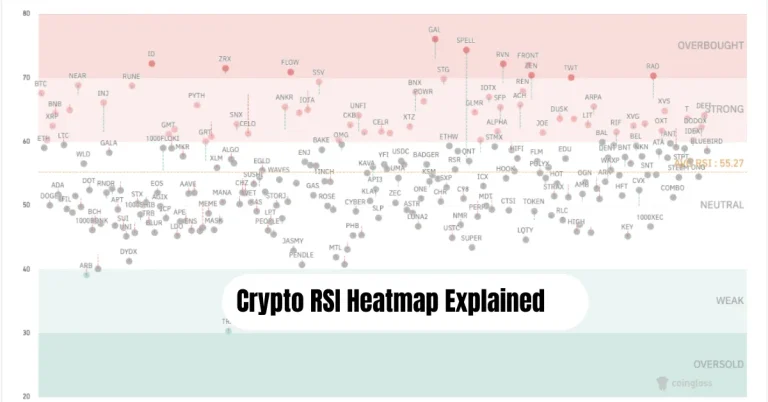Bitcoin Hash Ribbons Indicator

Bitcoin Hash Ribbons Indicator (Explained With Past Results): The Hash Ribbons Indicator by Capriole Investments is known for providing accurate, long-term Bitcoin buy signals using miner activity as a signal. It combines key insights about the hash rate of Bitcoin with technical analysis to detect possible market bottoms. As miners close shop for lack of profit, the hash rate declines–this time is referred to as miner capitulation. When the network does so, the Hash Ribbons flash a signal that in the past has coincided with powerful bounces. In this article, we’ll explore how the Hash Ribbons Indicator works, look at its historic track record, past results and analysis it means for investors. At the end, you’ll know if it has a place in your investment plan and how to use it strategically to make better Bitcoin decisions over the long run.
Bitcoin Hash Ribbons Indicator—What is it?

Bitcoin Hash Ribbons is a signal developed by Capriole Investments that signals potential market bottoms in Bitcoin, based on miner behaviour. It is based on the 30-day and 60-day moving averages of Bitcoin’s hash rate—the total computational power used to mine Bitcoin. It indicates when the 30-day moving average moves below the 60-day moving average, and is an indication of miner capitulation that is typically the result of low prices that make mining unprofitable. When this momentum changes, the indicator signals to buy. Also, these signals have typically been followed by strong price recovery, which is why the Hash Ribbons are such a highly regarded long-term tool of investment.
In other words, the Bitcoin Hash Ribbons look at Bitcoin mining data to identify when miners are forced to shut down because of losses, and when they begin to come back. These can be exposed when Bitcoin is cheap or undervalued. The Hash Ribbons Indicator has correctly identified strong buy opportunities on the upside in the past and helping long-term investors to act smartly.
How Does Bitcoin Hash Ribbons Indicator Function?
Here are the four stages of the Bitcoin hash ribbons indicator, along with their explained work mechanism:
1. Miner capitulation:
This phase starts with Bitcoin prices falling, or the cost of mining going up, making it unprofitable for miners to mine. In the process, several miners went offline, and the hash rate declined. When that dotted line falls below its lowest horizontal, then it’s game over, miners have capitulated.
2. Early mining recovery signs:
Miners slowly restart operations after the first crash in the hash power, showing signs of recovery. While the hash rate is starting to recover, the 30-day average lags well behind the 60-day average, and capitulation is not yet behind.
3. End of Miner capitulation:
When the 30-day moving average bounces above the 60-day moving average again, then miner capitulation is officially over. This cross is indicative of a strong bounce from miners, and the majority of selling pressure is now behind us.
4. Bitcoin buy signal:
This final phase is a mix between hash rate recovery and bullish momentum. The last buy signal occurs when the 10-day price moving average of Bitcoin crosses above the 20-day average. This crossover signals increasing investor interest and purchasing strength and validates a strong buy point supported by health in mining as well as price action.
Track Record & Past Results—Bitcoin Hash Ribbons Indicator

There is a proven track record of the Bitcoin Hash Ribbons in previous market cycles. The Hash Ribbons Indicator has generated 14 official buy signals and roughly 64.29% of these trades were profitable. The average trade duration was about 253 days, if we assume that investors exit after the next miner capitulation sign. In comparison to simply buying and holding, all periods have produced a superior return using the Hash Ribbons. The approach capitalises on periods of poor miner performance and subsequent recovery that coincide with Bitcoin’s long-term price recoveries. But keep in mind that these are the results of historical back-testing, no guarantee of future success. Market conditions can always change, so even though this has been a useful indicator, you need to consider it as part of the whole package when deciding how to invest, along with other tools and a good risk management plan.
Key Takeaways from Past Results—Bitcoin Hash Ribbons Indicator

The Bitcoin Hash Ribbons are not only becoming increasingly respected over time, but it has also had great performance in terms of timing. Here are key takeaways from the indicator’s historical performance:
- Major Timed Bottoms: The signal has proven to be a reliable way to spot major Bitcoin price bottoms, when miners have thrown in the towel and only long-term holders are selling.
- 14 Buy Signals Since 2013: A total of 14 “buy signals,” as defined by colourful dots, have appeared since 2013, a large enough sample size from which to judge performance.
- 64.29% Profitable Signals: Almost two-thirds of the buy signals have translated into profitable trades over the long term, which is quite strong for a long-term strategy.
- 253 Days Time Frame: Those who entered when signs turned positive and exited on the following capitulation had holding periods of about 8 months, so The Hash Ribbons Indicator strategy may work best for patient, long-term investors
- Back-Tested Performance: All historical performance is based on backtesting, not actual trades, so while impressive, these results don’t promise future performance.
Final Words
The bitcoin hash ribbons are a hybrid of fundamental and technical analysis that centre around miner activity, signalling when to buy due to potential market bottoms. Its historical behaviour has been quite bullish, with many long-term buy triggers after miner capitulation is over. It’s no surefire way to succeed, but it may prove useful as part of an overall investment strategy. By learning how the indicator works and examining past signals, investors can make more educated decisions. Don’t forget to supplement these tools with good research and with proper risk management before you invest in Bitcoin or any other cryptocurrency.
Read More:
FAQS—Bitcoin Hash Ribbons Indicator
1. What exactly is the Bitcoin ‘Hash Ribbons’ indicator?
The Hash Ribbons utilizes Bitcoin’s hash rate data to measure miners capitulating and then recovering. It follows the 30-day and 60-day hash rate moving averages as a means to identify long-term buying opportunities of Bitcoin once miners have powered down.
2. How much can we trust the Hash Ribbons?
The Hash Ribbons indicator is not without its drawbacks, but it has been successful in terms of historical performance. About 64% of its buy signals since 2013 have been winners. But it’s based on back-tested data and should be used in combination with other strategies for optimal results.
3. Why do miners capitulate?
Miner capitulation typically occurs when Bitcoin’s price falls or the costs of mining rise and the activity becomes unprofitable. As miners power down their machines, the network’s hash rate falls, a signal of selling pressure and market bottoming.
4. Is Hash Ribbons an effective indicator in all market conditions?
Nor does any indicator perform perfectly through every market cycle. The Hash Ribbons works much better during deep corrections (or, even better, after them), not during sideways or overbought periods. It can prevent investors from entering the market early and optimize the period of recovery.











2 Comments